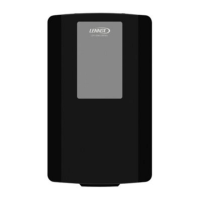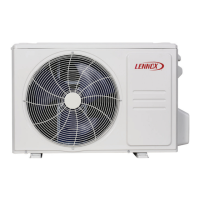16
5.8. Insulating the Refrigerant Pipe
• The refrigerant pipe should be insulated and taped to prevent condensation and water leakage.
• The joints of the indoor unit should be wrapped with the insulation material. Ensure there is no gap
is on the joint of the indoor unit, as shown in Figure 8.
Figure 8: Insulating the Refrigerant Pipe
• Once insulated, ensure the pipe bend radius is not too small as this may cause the pipe to crack
or break, resulting in leakage.
• Do not wrap the pipe too tightly or the insulation eect may be weakened. Additionally, make sure
the drain hose is separated from the pipe.
To wrap the pipe with tape:
1. Bind the refrigerant pipe and electric cables together with tape and separate them from the drain
pipe to prevent the condensate water ovelowing.
2. Wrap the pipe from the bottom of the outdoor unit to the top of the pipe where it enters the wall.
During the wrapping, ensure the tape will cover half of the former one.
3. Fix the wrapped pipe on the wall with clamps.
4. To finish, fill the hole in the wall with sealant to prevent wind and rain entering the room.
5.9. Support and Protection for Pipeline
1. Add additional supports for hanging connection pipe. The distance between each support must
not exceed 1m.
13 23 50 | lennoxaus.com.au
LENNOX MULTI SPLIT INVERTER
Outdoor Unit
CAUTION

